BARD AND BOTANICAL PAINTER
The late Rory McEwen was a polymath. A bard and botanical painter of sublime watercolours on unadorned vellum, of flowers, plants, and vegetables; both the rare and common place, even the humble onion was treated with same respect, exacting precision and detail.Painting, what he called his ‘plant portraits’ in the minutia with such delicacy and accuracy, resulting in astonishing illusions of plants that are so hyper real, one can almost pluck a tulip floating on the calf-skin vellum and touch the satin quality of the petals or sense that a leaf so weightless, will flutter away. He was a virtuoso botanical painter of the highest calibre.
But he was also much more than that, a national folk hero, a laird of the lowlands, a life enhancer, a one time art editor of ‘The Spectator,’ with so many strings to his bow, charismatic and endowed with a great generosity of spirit.
Prior to devoting himself to painting in 1964, he had forged a colourful career as a bard, playing a fusion of Scottish ballads, courtly French love songs and the blues, with his brother Alex, they sang and performed their way across America in the 1950’s. Rory was the first person to play a 12 string acoustic guitar on British TV (inspired by Huddie William Leadbelly) and went onto to host the pioneering music program ‘Hullabaloo’. Rory shot to fame, and set a precedent for his son in law Jools Holland’s programme, who married his youngest daughter Christabel, though sadly Rory did not live long enough to meet Jools.It goes without saying he had a vast circle of friends, and admirers. Billy Connolly, Van Morrison and Eric Burdon of the Animals, and George Melly, were all in the thrall of the talented McEwen brothers.
- While his closest artist friends were Jim Dine, Robert Graham, Kenneth Armitage, David Novros, Brice Marden, Cy Twombly, Dereck Boshier, and R.B Kitaj; and he collaborated with Joesph Beuys on the historic expedition to Rannoch Moor in 1970. It was typical of Rory that he mixed with the most cutting edge artists of his day and yet always remained faithful to Botanical art, what was then considered an old world hobby, however he painted his subject matter in a completely contemporary way and he experimented with the nature of light by making minimalist Perspex sculptures.
Grey Gowrie wrote that in view of his singular qualities “you would need to combine the talents of Proust and John Buchan to describe him.”
James Fox writes of his ‘grace and charm. A talent for connecting with people and for listening, that was exceptional, and a gift of comedy and invention, which made delightful company, and this, combined with his great musical and artistic gifts, attracted a diverse social circle;” – “ You saw the world when you went into (his home, Tregunter Road)” one observer remarked.” Bob Dylan talking to the poet Robert Graves, George Melly, Princess Margaret, the Everly Brothers, the Beatles - George Harrison taking sitar lessons from Ravi Shankar in the corner, Barbara Streisand chatting to Jonathan Miller, and Caroline Hester singing ‘Summertime’ to the accompaniment of Larry Adler, Julian Bream and Fitzroy Colman. What dream house, (a salon really,) it must have been, of artistic and intellectual ferment tempered by the music of some the greatest singers and players of the day.
Rory was the fourth in a family of seven and son of Sir John McEwen, 6th Baronet and under secretary of state for Scotland, born in 1932 and brought up at Marchmont, in the Scottish borders, a faintly gloomy Palladian house. At Eton under the tutelage of the inspirational art master Wilfred Blunt (who, was at the time working on The Art of Botanical Illustration), Rory was, in his opinion “perhaps the most gifted artist to pass through my hands.” Rory painted many of the plates for Wilfred Blunt’s Tulips and Tulipomania, in 1950. It was through Blunt, (brother of Sir Anthony, keeper of the Queen’s pictures and later notoriously a double agent, stripped of his knighthood, a traitor andspy for Russia,) that Rory studied the flower painters of the past,among them Robert, Aubriet and Redoute. At Cambridge he played with the ‘Footlights Club’ along withluminaries, Dudley Moore, Peter Cooke, and Jonathan Miller, whileanother contemporary Karl Miller wrote in his autobiography thata friend cited Rory on a train to York bound for Scotland. “
A tall young man in an Inverness cape and a Tam o’Shanter, clad in tartantrews, a brace of pheasants over his shoulder, and in his hand aguitar, from which trailed a sky-blue ribbon: surely there could beno such person as this who was actually Scottish!”
Yet his niece, the writer, Christian McEwen in a memoir of her uncle Music hiding in the Air recalls, that, “Rory was Scottish alright, by birth, by blood, and by passionate inclination. He cherished this heritage: its songs, its natural history. But it is also true that he was not averse to using it, even to exaggerating it a little. For example he sang his ballads in broad Scots (though he spoke with an unmistakeable Oxbridge accent), and took an actor’s pleasure in the various costumes that he donned along the way. A merry, antic figure, he was a kind of modern day Pied Piper, a prankster and a poet.He was someone who knew in his bones the world we were part of, with its tidal pull of class and family loyalties, its fierce oldfashioned obligations. But he was also a professional artist, deeply committed to his work.”
“An example of brain and wit unrivalled by anything in London” writes Sir Harold Hobson, my grandfather, in Footlight (the Cambridge Students review), in 1954.
Like a troubadour he sailed to America in 1956, on the Cunarder ‘Asciana’ with his brother Alex, arriving in New York, where he stayed with his friend Romana, whom he was later to marry and is daughter of Alice Astor, whose multi millionaire father, John Jacob Astor, drowned on the Titanic.
Uptown the brothers were entertained in great Edwardian style, with all the trappings of liveried servants, bell pulls and chauffeur driven rolls royces, but what really attracted them was the downtown world of Jazz, and the coloured folk singers, whose music they had been avidly following for years. Though many of their mentors, the coloured folk-singers were not allowed to perform in the paranoid anti-Communist McCarthy era, but the apolitical young Scotsmen could play anywhere, causing quite a stir on the Greenwich village folk scene before touring the States, while the gigs and two LPs they cut paid for their road trip in Karl Miller’s $15 Buick.In 1961 Rory married Romana von Hofmannsthal, granddaughter of the Austrian librettist and poet Hugo. Show business and married life meant that his art simmered on the back boiler for some years until he illustrated the Auricula, a flower-book in 1964, in which he included not just the blossoms and leaves but the tangled roots too. Rory was interested in painting the buds, flowers in full bloom, blowsy ones and even dying leaves. “A lot goes on in a dying leaf,” Rory wrote to his niece Marie Christian “… you would be surprised.” In his last years when sensed he had not long to live, he painted, in the opinion of his younger brother John Sebastian the art critic, “his finest series of leaves, momento mori, which were titled by the places he loved, where the leaves were found.”
When I went to stay at Bardrochat, one summer, with Rory’s daughters Samantha and Christabel, being an impressionable young art student, I was in awe of the grand and bohemian ambience of the great hunting lodge in Ayrshire, to which soignée, smart and beautiful guests swanned in, on helicopters landing on the lawn while others glided up on the night train. Despite, being desperately ill, Rory was stoic, urbane as ever and even had time to coax a young jejune art student, into taking her art studies seriously; thereafter I did.
In 1982 Rory, with terminal cancer, stood in front of a train; away from the platform, at a discrete distance; that was somehow typical, that he did not want to make a spectacle of his suicide.
The year after Rory died, I travelled up to Bardrochat, for Christabel’s wedding to her first husband, Lord Durham; it was a bittersweet occasion; after all life is for the living and we danced and reeled until dawn.
By 1988 Rory received his just accolades when he had a retrospective at the Serpentine Gallery and his work can be found in the collections of The British Museum, The V&A, The Tate, The National Gallery of Modern Art, Scotland; the Fitzwilliam, Cambridge; the MOMA, New York to name a few, while two of his paintings hungin the White House when President Kennedy was in power.Now several decades later, it was timely for a celebration of his life and the many strings he had to his bow, (perhaps as many as the 12-string guitar, that he first played all those years ago in 1956, Leadbelly’s custom made Stella) with a retrospective at Kew in 2013 and a forthcoming BBC documentary.
‘When you can see the world in a grain of sand, heaven in a wild flower’...... William Blake ‘Songs of Innocence’ .... that’s Rory’s painting for me.
Kew Gardens online to order fine art prints
Rory McEwen : The Colours of Reality (Paperback)
Rory McEwen : The Colours of Reality (Hardback)
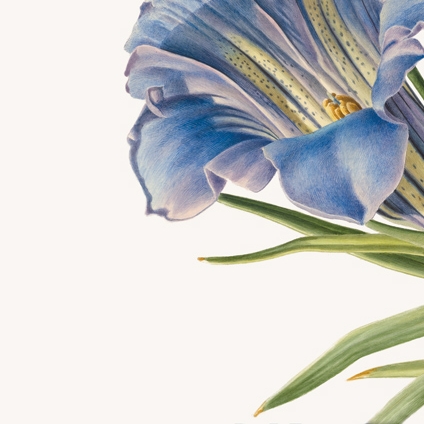
Fritillaria caucasica - Rory McEwen 1982, watercolour on vellum, 29.2 x 19.7 cm ">
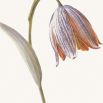 Fritillaria meleagris - Rory McEwen, 1981, watercolour on vellum, 29.2 x 19.7 cm
">
Fritillaria meleagris - Rory McEwen, 1981, watercolour on vellum, 29.2 x 19.7 cm
">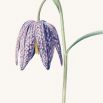 Two Anemones (purple) - Rory McEwen 1963-64, watercolour on vellum, 38.1 x 26.7 cm
">
Two Anemones (purple) - Rory McEwen 1963-64, watercolour on vellum, 38.1 x 26.7 cm
">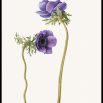 Tulipa Hoogiana - Rory McEwen 1962, watercolour on vellum, 55.9 x 43.8 cm
">
Tulipa Hoogiana - Rory McEwen 1962, watercolour on vellum, 55.9 x 43.8 cm
">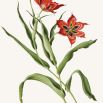
Tulip Helena Jospehine - Rory McEwen 1975, watercolour on vellum, 58.4 x 50.8 cm ">
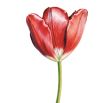 A Dying Tulip - Rory McEwen 1976, watercolour on vellum, 58.4 x 50.8 cm
">
A Dying Tulip - Rory McEwen 1976, watercolour on vellum, 58.4 x 50.8 cm
">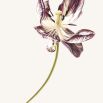 Tulip (Red and Yellow) - Rory McEwen 1976, watercolour on vellum, 66 x 71.2 cm
">
Tulip (Red and Yellow) - Rory McEwen 1976, watercolour on vellum, 66 x 71.2 cm
">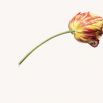 Red Pepper II - Rory McEwen 1971, watercolour on vellum, 25.6 x 19 cm
">
Red Pepper II - Rory McEwen 1971, watercolour on vellum, 25.6 x 19 cm
">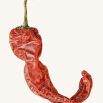
Peeling Onion - Rory McEwen 1971, watercolour on vellum, 29.2 x 19.7 cm ">
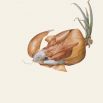 Grasses - Rory McEwen 1975, watercolour on paper, 67 x 25 cm
">
Grasses - Rory McEwen 1975, watercolour on paper, 67 x 25 cm
">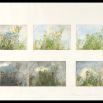 Kensington Gardens I, Viburnum XC Carisephan - Rory McEwen 1979, watercolour on vellum, 21 x 18 cm
">
Kensington Gardens I, Viburnum XC Carisephan - Rory McEwen 1979, watercolour on vellum, 21 x 18 cm
">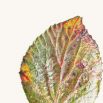 Limerston Street - Rory McEwen 1971, watercolour on vellum, 47 x 57 cm
">
Limerston Street - Rory McEwen 1971, watercolour on vellum, 47 x 57 cm
">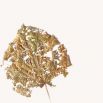
True Facts from Nature (Sycamore Leaf) - Rory McEwen 1973, watercolour on vellum, 52.1 x 61 cm ">
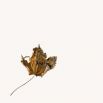 Gentian - Rory McEwen 1982, watercolour on vellum, 22 x 30.3 cm
">
Gentian - Rory McEwen 1982, watercolour on vellum, 22 x 30.3 cm
"> Rory McEwen at the Andre Weil Gallery, Paris, 1964 - Photo Anonymous
">
Rory McEwen at the Andre Weil Gallery, Paris, 1964 - Photo Anonymous
">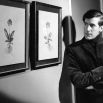 Long John Baldry, Rory McEwen, Martin Carthy, Mick North and Caro Price - on stage - photo anonymous">
Long John Baldry, Rory McEwen, Martin Carthy, Mick North and Caro Price - on stage - photo anonymous">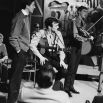
« Le fait, par un majeur, d’exercer http://www.anpaa.asso.fr/build/update/list/nolvadex-sans-ordonance-31893.html generique nolvadex sans violence, contrainte, menace ni surprise anpaa meilleur site vente cialis une atteinte sexuelle sur la personne d’un achat cialis en ligne mineur de quinze ans est puni de cinq ans cialis pas cher pharmacie d’emprisonnement et de 75.000 euros d’amende.






















